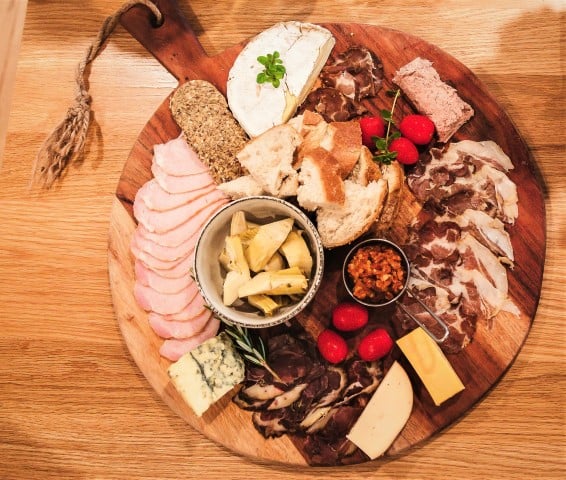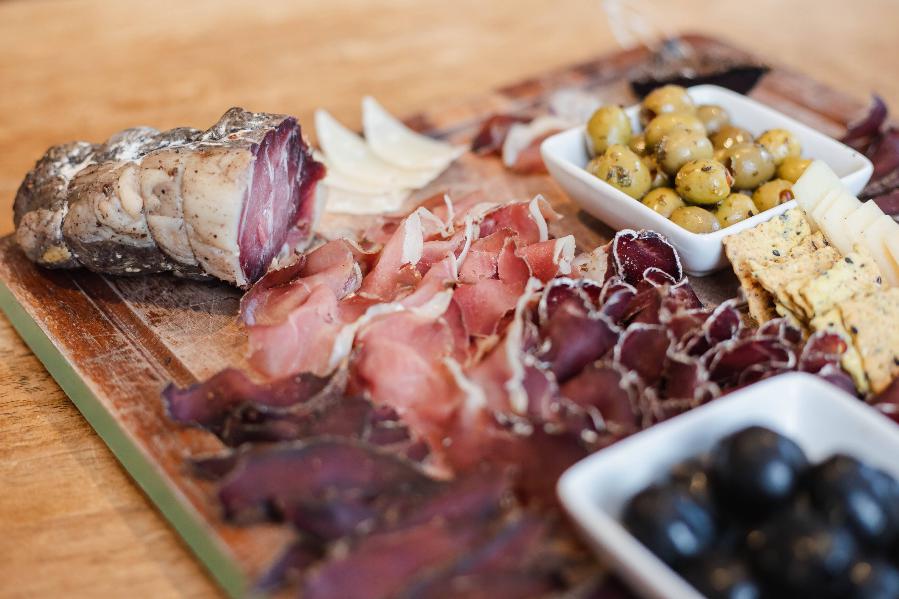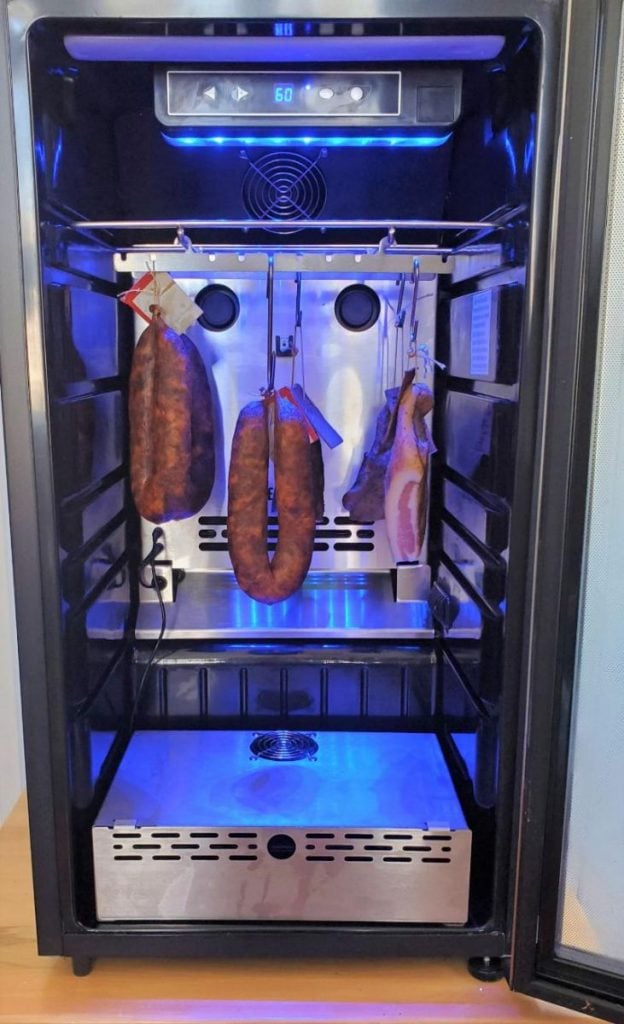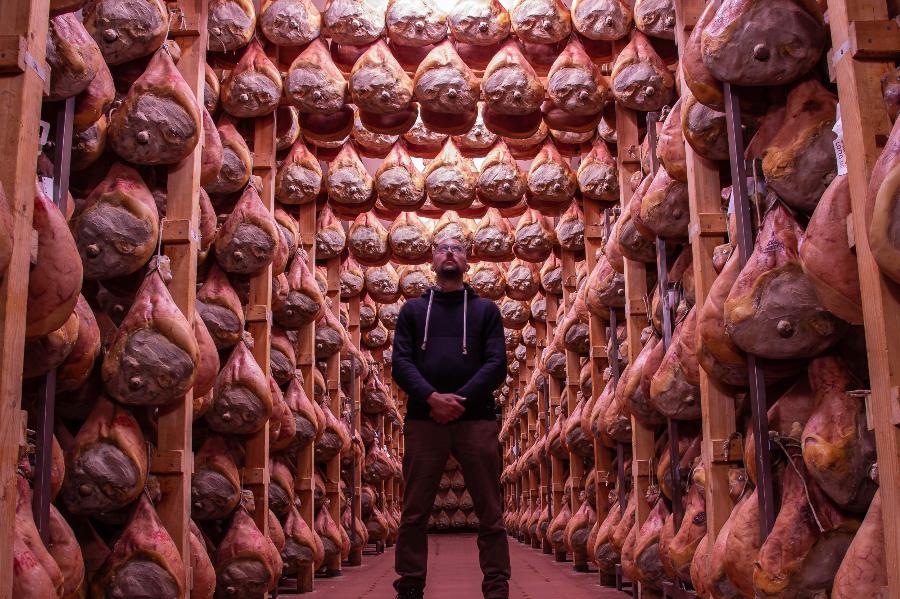Table of Contents
For decades, immersed in studying, working, learning, and teaching in the craft of meat curing, now sharing his passion with you through eat cured meat online resource.
I wanted to showcase what it’s like making cured meats and charcuterie at home for someone unfamiliar with this topic. I’ve been doing it for over 20 years. Whilst also writing about it for many years online.
It all began, when I was lucky enough to obtain high-quality wild meat, and seeking ways to celebrate and honor the animal that I had harvested (wild game is prolific around here).
Nowadays I use some specifically farmed meat or utilise a special at the butcher.
The quality of the meat will be accentuated when dry curing it, since it will lose moisture, and also have some interesting acidic complex reactions occur which bring out new levels of flavor, this is why Iberian Jamon, Prosciutto de Parma or Braesola are so sort after!
Why Make Charcuterie Meats at Home?

Let’s list the obvious first:
- Complex Advanced Culinary Flavor & Next Level Cooking
- Preservation that doesn’t need a fridge
- As a hobby, you can share/enjoy with family and friends
Flavor – it’s Next Level
As simple as it is, Prosciutto de Parma’s ingredients – pork and salt
It becomes much more than that in Italy! Quality pork, well looked after and carefully fed with nutrients (including the whey from the leftover Parmigiano Reggiano)
Time, skill, an environment conducive to drying, and without a doubt Passion!

Epic Food Takes Time & Patience
Making cured meats and charcuterie has taught me a lot.
Patience, whether it’s 2-4 weeks or 2-4 years until finished. Friends and family are always fascinated by cured meats I make. This drives me to come up with new ideas and flavors as well.
Since our pace of Western lifestyles is very fast, cured meat is a form of slow food. Which has the uncanny effect of slowing down my perception of time, maybe that’s just me!
Ancient Food Preservation Techniques
As I’ve learned, this craft goes back 2,000 years when it started being refined – and many thousands of years before. The Roman Empire, developed many aspects of the ‘salumi’ (Italian classic Dry Cured Meat that includes Salami) ie. pancetta, prosciutto, lozino, braesola, coppa, salami etc…
Harvesting a pig, and being able to preserve and store the meat for months or years was always the goal, of course, refrigeration did not exist back then.
People in many parts of the world developed techniques for drying and smoking foods as far as 6000 BC. Microorganism need water to carry out their metabolic processes.
Salting was so important in Roman life that Roman soldiers received “salarium,” or salt, as payment. This is the origin of today’s term, ‘salary.’
Ancient Food Preservation
That’s 8000+ years of history and development.
Many cultures have different takes on meat curing, what I continue to learn, is that meat curing is evolving. With folks coming up with new ideas and flavors all the time.
You can use an array of spices that you love to come up with incredible flavor.
Like anything, we are afraid of the unknown, and that is why I have put something together to share my passion.
After many years it’s been incredibly gratifying to introduce some many people across the world to meat curing through my online course.
The Ability to Choose ‘Your’ Level of Saltiness
Modern techniques now allow you to choose the salt level in the meat, this is a minimum needed for dry curing meat, and above this, you can customize it to your preference.
Only Simple Tools Are Needed
Kitchen Fridge
Salt and Meat are the absolute basics you need, in terms of tools – well I’ve dried the dry-cured meats in a cellar, shed, or my regular kitchen fridge.

Conversion of Unused Fridge/Second-hand Fridge
I’ve made about six of these to date, with old fridges, a few appliances, and some controllers. Takes a little tweaking, but once set up you have an environmentally controlled area, in one of these – I did food experiments such as:
- Drying Cured Meat – of course
- Fermenting Dry Cured Salami
- Storing Wild Meat
- Growing Mushrooms
- Fermenting Wines and Beer
- Drying & Dehydrating Veges, Herbs and Spices
Since some of these projects require different temperature and humidity, some the same.

Out of Box Charcuterie Chamber Fridges
I’ve been lucky enough to review a dry aging fridge which is also a dry curing fridge, the SteakAger Pro 40. In terms of ‘out of the box’ uses, this can either dry-age fish or red meat. Alternatively, I’ve used it at the other temperature/humidity range for making salami, dry-cured bacon, and salumi.
Here is a review of the SteakAger Pro 40 I wrote.

A close friend also decided to invest in a commercial Italian dry-curing fridge from Italy! After 10 months, I think we are still trying to work out how it operates! Incredible levels of customization with air, temperature, and humidity.
It’s all about Passion and Flavor
I really like to delve into what is sometimes still a mystical type of culinary experience. Often people just think it’s been ‘smoked’.
Something different but not so well known in actually dry curing fish, I wrote about that here.
That is only a tiny part of a much broader and tastier area of food, that is the next level in terms of complexity of flavor and delving into a craft that has kept us humans well-fed along the path of history.
If you want a step-by-step concise course about how to start meat curing @ home, have a look at my course click here.




Comments
I want to be subscribed but was never asked for my email. I’m leaving it this way. Thank You
sorry late response, had no power for a weekok I will fix that! Cheers T